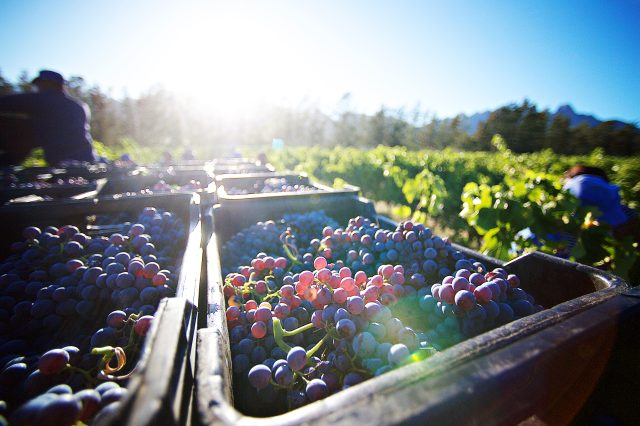This website uses cookies so that we can provide you with the best user experience possible. Cookie information is stored in your browser and performs functions such as recognising you when you return to our website and helping our team to understand which sections of the website you find most interesting and useful.
Four deaths during Champagne harvest may be linked to heat
Grape picking in Champagne began on 5 September during a heatwave, with four worker’s deaths attributed to the high temperatures, which reached more than 35 °C during the first week of the harvest.

Temperatures have been high enough that there have been several reports of pickers being overcome by the extreme heat, with four people dying last week in what Champagne’s local paper l’Union says are incidents related to the high temperatures.
One of the victims who died on 5 September was a man in his forties who collapsed after suffering cardiac arrest in the vineyards in Vitry-en-Perthois.
It has since been reported that on 8 September, a 19-year-old man from Rémois died following a fall from an enjambeur – one of the tall specialist tractors that straddle the narrow rows of vines – on plots of vineyard in Rilly–la-Montagne.
Maxime Toubart, president of the SGV, the main growers’ union in Champagne, is quoted as saying: “It’s the first time this has happened and the first time it’s been this hot [in September]. We are not used to harvesting in temperatures like this.”
While acknowledging the extreme heat in the first week of picking, with temperatures reaching between 35-38 °C the previous Sunday (9 September), Hennelore Chamaux, directrice generale at Champagne Castelnau, said it was too early to know whether the weather was the main cause of the deaths.
“It was very hot, some started picking later in the evening using headlamps, or else very early. Fortunately, this week, after some heavy showers on Tuesday afternoon (12 September), temperatures have cooled to the early 20s [degree Centigrade].”
Although it’s not clear that the deaths were directly related to the heat experienced by pickers in the first week of the harvest, visiting producers in the Côte des Blancs and Montagne de Reims last week were all very concerned about the conditions, given the hard physical work of cutting grapes by hand.
Many producers have taken precautions, such as starting to pick early in the morning, even using lights attached to helmets before dawn breaks and finishing harvesting in the early afternoon, while trying to keep pickers hydrated by constantly replenishing supplies of cold water.
Harvest of extremes
After a wet and humid end to August in Champagne, which sparked fears of a harvest like 2017, when similar weather provided perfect conditions for a severe botrytis attack, the mini heatwave did at least halt the spread of botrytis and given the very large agronomic yield available, especially for Pinot Noir, with the help of strict sorting, rot is generally not expected to be a major problem.
The earliest crus to open were in the Côte des Bars where the secateurs were out in several villages on Tuesday 5 September, while the picking officially began in Montgueux, a specific Chardonnay-dominated cru, immediately to the east of the city of Troyes, on Saturday 2 September.
It’s clearly another harvest of extremes boasting the largest bunches of grapes on record, with the average over 220mgms and individual bunches over 700gms. There are also higher yields in Pinot Noir than Chardonnay, with 16,000-18,000 kg per hectare the norm, and far higher levels of agronomic yields in some places.
There will be a more detailed report on the 2023 harvest and the extreme conditions seen in recent years in the October issue of The Drinks Business.

